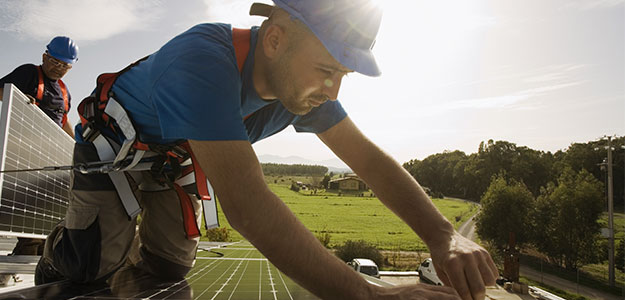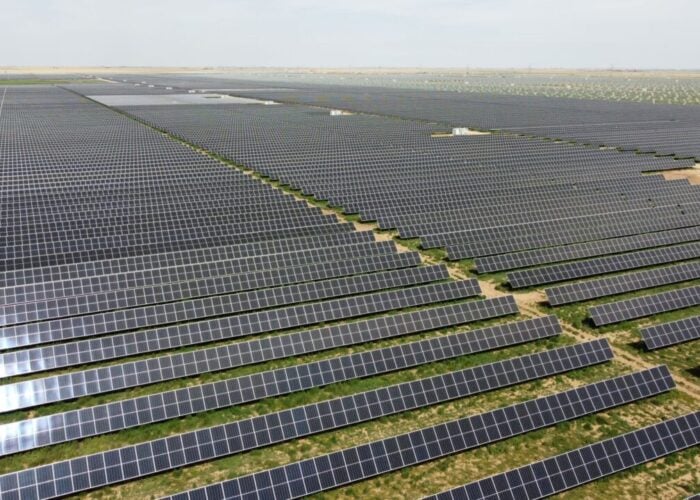
Sunrun managed to boost revenues in Q1 2020 despite the COVID-19 outbreak but became loss-making once more amidst a belief that a move to online sales mitigated the hit.
New financial results show the residential installer recorded Q1 2020 revenues of US$210.7 million – up 8% on Q1 2019 figures – but dipped into the red in the quarter just gone, with net losses ($28 million) reversing positive net income in Q3 2019 (US$29 million) and Q4 2019 (US$12.5 million).
Unlock unlimited access for 12 whole months of distinctive global analysis
Photovoltaics International is now included.
- Regular insight and analysis of the industry’s biggest developments
- In-depth interviews with the industry’s leading figures
- Unlimited digital access to the PV Tech Power journal catalogue
- Unlimited digital access to the Photovoltaics International journal catalogue
- Access to more than 1,000 technical papers
- Discounts on Solar Media’s portfolio of events, in-person and virtual
Or continue reading this article for free
Over 2020’s first quarter, Sunrun saw 15% year-on-year hikes in total cost of revenues (rising to US$169.9 million) and operating expenses (rising to US$273.7 million). Measured on a per-watt basis, so-called creation costs dropped 11% compared to Q1 2019, falling to US$3.09.
The Q1 2020 financial update follows Sunrun’s publication in early April of its solar roll-out figures for the quarter. The firm, seen as the top US residential installer after passing rival Tesla in early 2018, said last month it had deployed 97.4MW of solar systems between January and March 2020.
While below its expectations of 102MW, the 97.4MW figure remains largely in line with Sunrun’s quarterly roll-out records last year, including Q3 2019 (107MW) and Q4 2019 (117MW). The number, ROTH Capital Partners said in early April, is “positive” given the current market.
This week, Sunrun said it remained cash flow positive as of the end of Q1 2020, with US$366 million in consolidated cash balance recorded at that point. Its current levels of pre-arranged financings would be enough to fund some 220MW of leased solar projects, the firm added.
Net income, solar installs of Sunrun in 2019 and Q1 2020
| Quarter | Q1 2019 | Q2 2019 | Q3 2019 | Q4 2019 | Q1 2020 |
|---|---|---|---|---|---|
| Solar installs | 86.2MW | 102.7MW | 107.2MW | 116.6MW | 97.4MW |
| Net income | -US$13.86 million | -US$1.29 million | US$28.9 million | US$12.5 million | -US$27.95 million |
Source: Sunrun
‘Slowdown’ in Q2, Q3 as FY guidance remains unclear
Sunrun’s update confirmed that for the time being, the firm will not be offering new 2020 guidance to replace the pre-COVID goals – to install 15% more this year – it had shelved in early April. The “many things outside of the company’s control” complicate making predictions, the firm said.
At a conference call on Thursday – where business execs paid homage to stepping-down CFO Bob Komin, set to be replaced by Google’s Tom von Reichbauer – Sunrun’s CEO Lynn Jurich shed some light on how the firm had navigated the COVID-19 disruption in Q1 2020.
The installer took, Jurich explained, only one week to shift its entire field sales team online. The ensuing scale-up of digital leads pushed orders to record highs at the end of April, the CEO said. Months or even years of digital evolution were “compressed into weeks”, Jurich added.
“What we see is that … if [the orders] are digital [people] are less likely to sign the order but they’re more likely to follow it all the way through to the install,” the CEO remarked, adding that Sunrun has found its sales ranks could handle “many more appointments” after the online move.
As Jurich acknowledged, however, Sunrun’s digital success does not remove the firm’s “big footprint historically” through face-to-face stores and others. This, the CEO went on to say, may impact the company’s performance in the coming months.
“While digital sales are up and hitting kind of records in April, overall we’re still going to see a slowdown over the next couple of quarters,” Jurich said. “But I think this is a long-term structural shift … I’m very encouraged by this transition and what it can mean for acquisition costs.”
PV Tech has set up a dedicated tracker to map out how the COVID-19 pandemic is disrupting solar supply chains worldwide. You can read the latest updates here.
If you have a COVID-19 statement to share or a story on how the pandemic is disrupting a solar business anywhere in the world, do get in touch at [email protected] or [email protected].







